originally posted at https://canmom.tumblr.com/post/665051...
Beep boop comrades, it’s time for Animation Night!
This week, as is traditional for numbers ending in 5, we’re going to focus on a technique. Namely the one ubiquitous type of animation that I’ve kind of sidelined in Animation Night so far: 3D computer graphics. Ironic since I once wanted to be a 3D animator as a kid, watching and rewatching Blur Studio shorts and fawning over the ‘realism’ of pre-rendered CGI in Septerra Core or even Final Fantasy: The Spirits Within. (Even without a tasty plasma to view it!) But when I got back into animation many years later, it was hand-drawn stuff that spoke to me much much more.
All the same, 3D CG animation has gone from novelty to ubiquitous in less time than I’ve been alive, completely displacing traditional animation’s place in at least mainstream, Western capitalist media production. That is kind of… mindblowing in a way, I’ve witnessed the birth of an entirely new art form in real time. So… how?
The use of these new-fangled computer machines in graphics goes back all the way to the 1950s, predating even ARPANET. Like a great many things in computing, graphics spun out of military tech: coming out of WWII and into the Cold War, the US military was throwing a lot of new things like planes and rockets into the air (and frantically racing the Soviets to pick up all the Nazi rocket scientists it could find, let’s not forget), and wanted to know where they were and indeed, where they might come down.
Early computer graphics leaned very much on the capabilities of CRTs, which could point an electron gun to a precisely determined numerical point and move it around faster than the eye could track it. You could use this to draw a coastline…
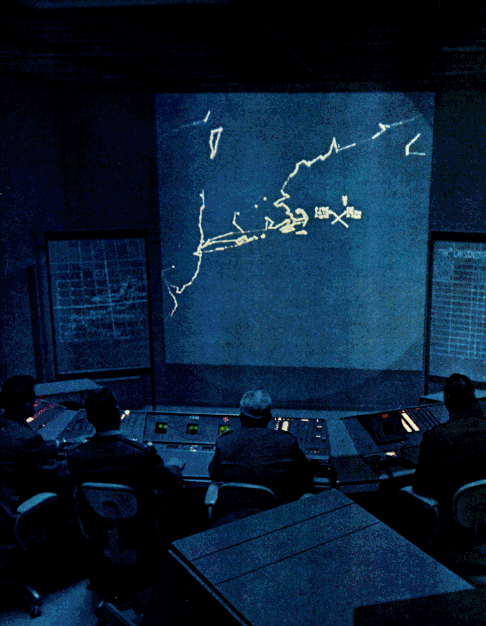
…but you could equally use it to draw a picture. So as early as the 50s, light pen based CAD programs like Sketchpad were beginning to debut.
Before long, these engineers were turning their machines towards play and art. Many of the basic elements of graphics, like the Bézier curve (used to design cars by Renault), start appearing in the early 60s, and indeed this is where we see the very first computer animation to air on TV, Rendering of a Planned Highway.
Hummingbird (1967) used the computer to gradually draw various poses of a hummingbird, although they don’t seem to have attempted to create an animation of the bird flying around or anything like that. The Soviets soon followed this with the first computer character animation, Kitty (1968), which appears to have been turned into a film by printing out its images on a dot matrix printer and then photographing them like traditional animation:
With these first steps in place, it was time for the whole thing to take off in the 70s… if by ‘take off’ we mean a lot of kinda jank looking experimental animations and academic conferences, notably the renowned SIGGRAPH inaugrated in 1969. A lot of the big names went to the University of Utah; you can read the details of various firsts and innovations on Wiki.
What I find interesting about this history is like, for… decades really it was just a sort of playful reappropriation of machines created for other purposes. It’s not like anyone really set out to completely change the aesthetic terrain of animated films and division of labour in the film industry: they just followed various ‘so what if I could’ paths; just like everyone else radar technicians have an urge towards ‘pointless’ artistic expression. This spirit is still maintained today by the demoscene. But because of the context this was happening in - you could only use a computer if you were at a very large company or the military - it seems pretty inevitable that whatever affordances it offered would be taken up by, well, ‘larger forces’…
Still, throughout the 70s, CGI mostly remained a curiosity, but Hollywood science fiction films had started to take notice, with Star Wars and Alien eagerly showing computer animated interfaces. Futureworld (1976) grabbed two of the first efforts to put a human being inside the computer as a little digital homunculus, a quest that still fascinates us…
And yeah, Edwin Catmull is the Catmull of Catmull-Clarke subdivision surfaces. Indeed, while many have been superseded in the era of shaders, a lot of techniques are named after those 70s CGI researchers - Phong, Blinn, Gouraud… (not Lambert though, he was from the 1700s!)
In the 80s, factories spun up and all that computer tech got a whole lot cheaper, and more and more films started to reach for CGI: not just wireframes on diegetic computer screens but attempts to composite CG characters into the ‘real world’. Of course the very well known one here is Tron (1982), which used about 15 minutes of CGI, and a vast amount of traditional rotoscoped backlight animation and compositing.
Full-CGI films also started to become a possibility, starting with short films which tended to lean heavily on the visual language of early, squash and stretch heavy cartoons, e.g. The Adventures of Andre and Wallly B:
or Locomotion (1989):
You can see a lot more ‘firsts’ and landmark productions on this Wikipedia list.
And now we can bring in Pixar.
Sigh…
It’s not that I hate Pixar! Their films are generally solid; they have all the technical aspects of filmmaking locked down, and they can of course take their pick of character animators. It’s just, for a studio that is so lauded, that drowns in accolades, one of the only animation studios after their (current) parent company Disney to be a household name… well, they are what they are. It is precisely because they focus on making centre-of-the-American-Overton-window, Family Friendly Entertainment that they occupy the place they do in the industry. As a kid I certainly bought the hype; now it exhausts me.
The other part is, of course, the modes of stylisation of Pixar films, if perhaps they were once quite recognisable, have basically become the de facto style of all CGI films. What can you say sets Pixar apart and gives them a distinctive voice? It’s just money. Their films are very polished and expensive. And they don’t seem to find women very interesting to tell stories about, but that is pretty much standard for the film industry…
Pixar at the outset are pretty similar to these other studios, indeed spinning out of Lucasfilm thanks to heavy investment by Steve Jobs; their first couple of shorts like Luxo Junior are short, silent, and focus on broad character acting - as well as showing off their fancy new self shadowing algorithm. They started squatting on the Oscars pretty soon after with Tin Toy (1988).
For some reason, of all the CG studios poking around in the world of polygons at the time, Pixar become the ones to take their ambitions to step up production and create a full scale, feature length film.
So, time for Toy Story?
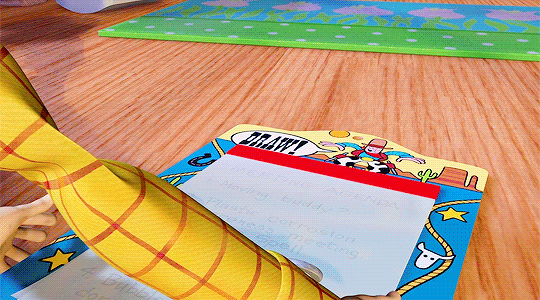
Not quite!
Before Toy Story, 3DCG animation was starting to find a use in TV animation. Reboot (1994) is probably the best remembered of this era, but actually the first was a French series called Quarxs (1990-93), three minute animations of strange abstract creatures. The Christians were pretty quick to jump on the scene with a series of Evangelical propaganda animations called Veggie Tales (1993). Its theological commitments take it to some very strange places (all these vegetables are going to Hell, Twitter tells me).
OK, now it’s time for the first 3D CGI feature length movie… the Brazilian film Cassiopeia (1996) about spacefaring robots… well, almost, it missed by a couple months, yeah it’s Toy Story.
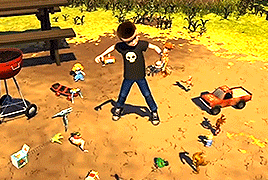
Toy Story is… OK, so as you can probably see from a lot of these examples, the shading models of a lot of these early CGI films looks very odd. Sort of like plastic. So, what if they we made a film about characters who are literally made of plastic? This would allow them to push the stylisation further, and the limitations of the animation would look much more appropriate. (I have no idea if this was the main reasoning for the subject matter, but Pixar had already been making films about toys).
Which leads to a movie exploring the idea that toys are sapient and live hidden lives, pretending to be inert objects to entertain children. Fascinatingly dark if you dig into it, and not exactly foreign territory for director John Lasseter, who shortly before being fired from Disney tried to pitch a CG version of The Brave Little Toaster. (That film ended up being made as a traditionally animated film outside Disney in 1987, with many future Pixar animators including Lasseter.)
Well, come the 90s and computers are cheaper and Disney realised they made a big mistake getting rid of Lasseter - and while he wouldn’t come back, they started to negotiate a deal for funding and distributing a Pixar film, following the precedent set by The Nightmare Before Christmas for a Disney-funded film produced outside the studio itself. The negotiations sound pretty tense, with good old Jeffrey Katzenberg up to his old tricks:
When Catmull, Smith, and head of animation Ralph Guggenheim met with Schneider in the summer of 1990, they found the atmosphere to be puzzling and contentious. They later learned that Katzenberg intended that if Disney were to make a film with Pixar, it would be outside Schneider’s purview, which aggravated Schneider.[15]
…but it worked out and they started working on a treatment. Lasseter’s original idea sounds kind of fascinating…
It paired Tinny, the one-man band from Tin Toy, with Woody, a ventriloquist’s dummy, and sent them on a sprawling odyssey. Under Katzenberg, Woody was the main villain, abusing the other toys until they rallied against him;
but Katzenberg vetoed it and ordered them to make a buddy film.
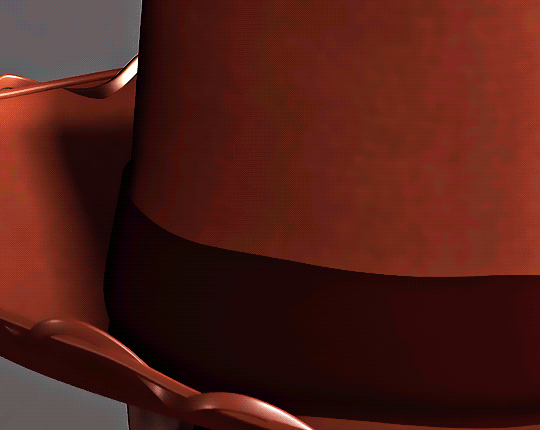
Anyway Joss Whedon was also involved. No really. Before he went through a rise and fall as the insufferable favourite of annoying nerds, ahem I mean the great feminist light of the future, he was just a scriptwriter guy, and he is the one credited with the idea of Buzz not realising he’s a toy.
Production on the film sounds pretty chaotic, thanks to… you know who! Oh, Jeffrey…
Pixar impressed Disney with its technical innovation, but convincing Disney of the plot was more difficult. At each of Pixar’s presentations, Katzenberg tore much of it up, giving out detailed comments and notes. Katzenberg wanted primarily to add “more edginess” to the two main characters.[25] Disney wanted the film to appeal to both children and adults, and they asked for adult references to be added to the film.[35] After many rounds of notes from Katzenberg and other Disney executives, the consensus was that Woody had been stripped of almost all charm.[25][44] Hanks, while recording the dialogue for the story reels, exclaimed at one point that the character was a jerk.[25] Lasseter and his Pixar team had the first half of the film ready to screen, so they brought it down to Burbank to show to Katzenberg and other Disney executives on November 19, 1993—an event they later dubbed the “Black Friday Incident”.[35][49] The results were disastrous. Schneider—who, due to his inability to secure a deal with Pixar, was never particularly enamored of Katzenberg’s idea of having outsiders make animation for Disney—declared it a mess and ordered that production be stopped immediately.[50]
This crisis was solved by a three month rewrite of the whole script:
Stanton retreated into a small, dark, windowless office, emerging periodically with new script pages. He and the other story artists then drew the shots on storyboards. Whedon came back to Pixar for part of the shutdown to help with the revision, and the script was revised in two weeks as promised.[51] When Katzenberg and Schneider halted production on Toy Story, Jobs funded the project personally. Jobs did not insert himself into the creative process, but instead managed the relationship with Disney. [49]
The result was, despite everything, a big success and really ignited Pixar’s rise; eventually Disney would end up buying the studio. Not long after, Katzenberg made his exit from Disney; wounded and eager to beat them at their own game, he immediately started on CG films alongside their brief period of traditional animation. Much like Disney, this involved contracting out to another studio, Pacific Data Images, who made the above animation of the train.
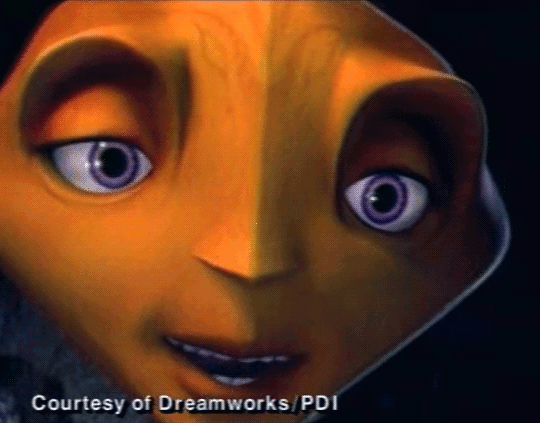
Dreamworks’ first CGI film, Antz, was developed from a concept devised while Katzenberg was still at Disney, called Army Ants, but it very rapidly became drawn into the feud with Disney, the papers loving the idea of a duel of ant movies (much to the upset of Lasseter who was working on Pixar’s second film A Bug’s Life). Antz ultimately lost this one, so it was instead Dreamworks and PDI’s second film, Shrek (2001), which really defined the shape of what CGI movies would become.
Adapting a fairly toilet humour oriented picture book, Shrek took the concept of a celebrity-voice-driven animated film that started with Disney’s Aladdin and replaced the hand drawn characters with (somewhat janky) rigged CG characters and dumped in a whoooole lot of references. By this point, CG animation was attempting stylised humans a lot more, but the results are, well, not quite there.
There’s a fascinating anecdote about the culture of Dreamworks at this period:
During production, animators who failed while working on other projects, such as The Prince of Egypt, were often sent to work on Shrek. The reassignment was known as being “Shreked” and being sent to “the Gulag”.[30]
Another buddy movie, Shrek transforms Mike Myers into an ogre and Eddie Murphy into a donkey and puts them through a variety of Disney fairytale movie parody situations. A lot of production stories concern the voice actors, like Myers asking to rerecord all his lines with a Scottish accent.
At the time of the release, Shrek was pretty well received; a lot of praise was given to Murphy’s performance. And then overtime it somehow mutated and became an iconic meme movie. In either guise… it made Dreamworks a lot of money. Much, much more money than their traditionally animated films.
And now it’s two decades on and you can’t move for talking animal CGI movies in just about every country in the world, the new format for a ‘cheap animated movie’. Disney and Dreamworks pretty definitively dropped their traditional animation for CGI; even traditional animation has pretty much dispensed with paper in favour of computer tablets. And even ‘live action’ film tends to be in large part CG compositing and animation, from expensive spectacle movies to more arthousey ones (Parasite which we watched a couple of weeks ago made half its central set in CG).
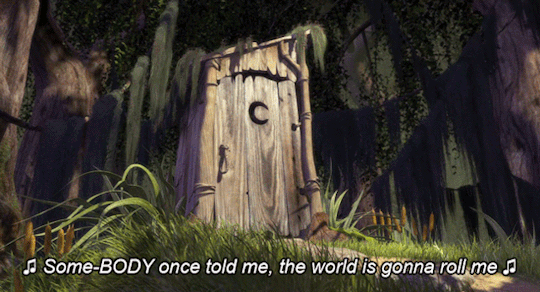
What has made CGI so goddamn successful? At first it was perhaps that it was cheaper: you didn’t have to pay anyone to draw thousands of inbetweens, you just had to buy an expensive computer and software license and pay people model thousands of random objects. Compared to Disney’s own animated films at the time like The Lion King, making Toy Story took a fraction of the people and, even with the production troubles less money.
A lot of the story is probably, well, CG animation is suited to divisions of labour, even more so than traditional animation. Every shot in a CG movie is generally the work of dozens of people each creating a tiny corner of the scene: modellers, texture artists, lighters, riggers, animators and you can run that production pipeline like a sweatshop because hey, the VFX industry made the mistake of coming into existence long after the big labour struggles of the mid 20th century. (Not that traditional animators have it great either). You can outsource different bits of production, lean on existing model libraries, and basically create a huge rolling snowball of ‘tech’ that is much easier to teach than traditional animation. It’s a lot easier to replace a texture artist than a key animator, so you can really ratchet up the labour discipline.
Of course, movie budgets have gotten much much bigger since the advent of CGI so that can’t entirely be it. But that’s capitalist competition, I guess: at first going CG saves money, then CG just lets you compete with the other companies using CG.
A lot of it might just be that, well, movie execs like to chase fads; CGI is certainly here to stay but perhaps the celebrity vehicle kids’ movie is not? Who knows. I’m out of time to speculate.
Tonight we’re going to watch a couple of crowd pleasers; I have not been able to get my hands on more obscure early CG movies like Cassiopeia or Thru the Moebius Strip (2005) so, it’s gonna be Toy Story and Shrek. But to try and maintain a shred of Animation Night cred I’ll be putting in a bit of The Mind’s Eye and some of those early films we saw up thread. We’re pretty low on time but luckily both those movies are pretty short…
Starting now at twitch.tv/canmom. Sorry it’s so late. I lost a lot of hours to tech bullshit today. Kind of fitting!
Comments